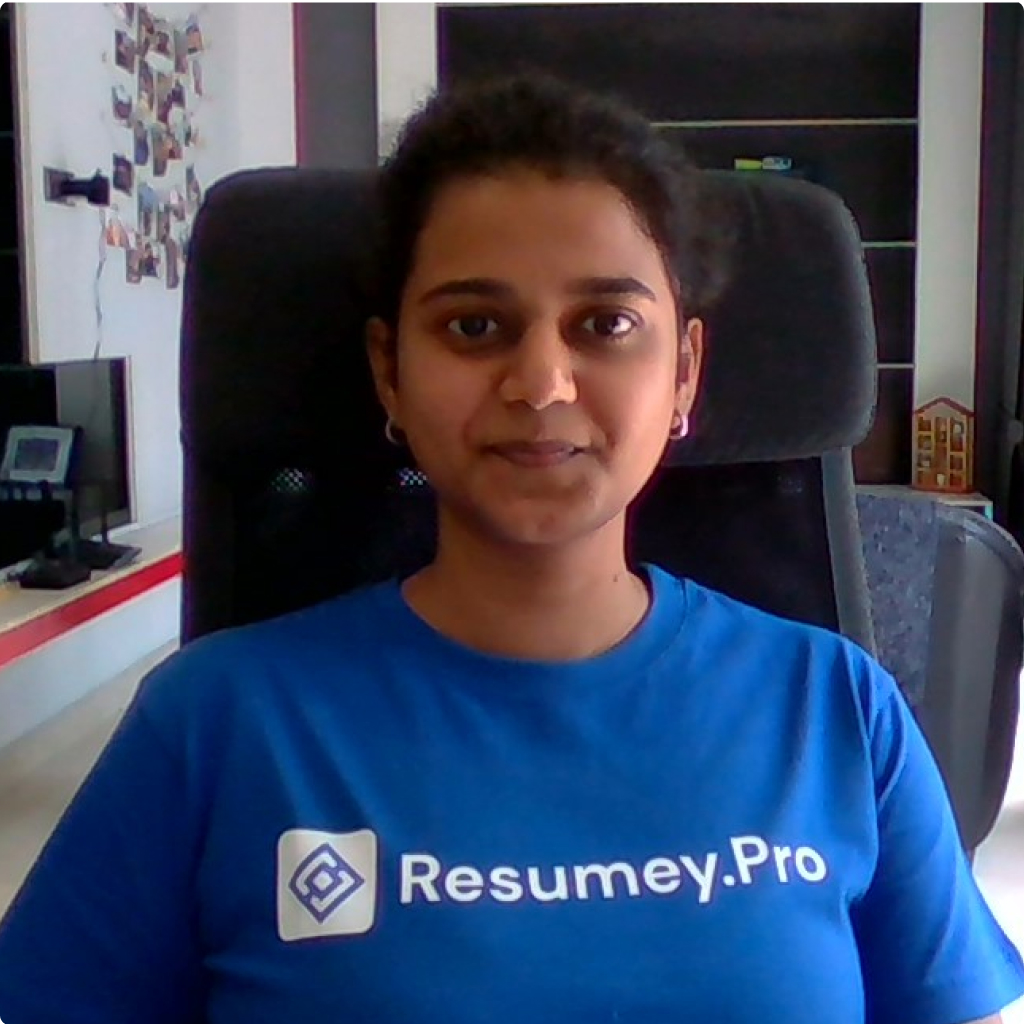Why Projects Matter on Your Resume
You're a fresher. The job hunt feels like a locked door: "Experience required," but how do you get it without a job? Feels like a catch-22 situation.
Here's your key: Your projects are your work experience.
Should I include projects on my resume? Absolutely, if they're relevant. If a project showcases a skill needed for the job, it belongs there.
Don't think of them as just school assignments, side hustles, or personal experiments. We'll show you how to add project details in resume for freshers that don't just fill space, but actually prove you can do the job.
How to List Projects on Your Resume: Show, Don't Just Tell
So, you've got cool projects. Now, how to list projects on resume so they actually get noticed? It's about being smart with what you show.
It's simple: Your project isn't about what you did, it's about what you achieved.
Every project description on your resume should be a mini-story of impact. It should answer three core questions for the recruiter:
- What problem existed? (The challenge you faced)
- What did you do to solve it? (Your specific actions)
- What was the measurable result? (The outcome or value you created)
When you describe a project, don't just list features.
Frame it as:
"I saw X problem. I built Y solution. It resulted in Z."
This means shifting your mindset. Instead of "Built a Python script," think:
"Automated a tedious data entry process (problem) using a Python script (action), resulting in a 25% reduction in manual processing time (result)."
When you write about each project, keep these points sharp:
- Problem, Action, Result (PAR) Framework: This is your template. Use strong action verbs to start your bullet points.
- Relevant Details: Pick your best, most relevant projects. List the specific technical skills (languages, software, tools) you used.
- Clear & Concise: Use short, punchy bullet points. Give it a clear Project Name and state your Role. Include Dates (add ongoing projects in resume clearly by writing "Ongoing" or "Present.").
It's about translating your work into the language of business: solutions and results.
Project experience resume examples:
- Developed a script that automated manual data entry, reducing processing time by 25%. (Problem: slow data entry; Solution: script; Result: time saved)
- Designed a new user flow for an e-commerce site, leading to a 10% increase in checkout conversions. (Problem: low conversions; Solution: new flow; Result: more sales)
 Your projects prove you're ready to contribute, even without traditional job experience.
Your projects prove you're ready to contribute, even without traditional job experience.
Tailoring Projects on Your Resume: Specific Scenarios & Examples
Every project you've touched, no matter how small or informal, is a chance to show what you can do. The trick isn't just listing them; it's framing them to speak directly to what an employer cares about.
For Fresh Graduates: Your Academic Edge
As a fresher, your academic projects are your primary professional experience. Don't call them "just schoolwork." This is where you applied theory, solved problems, and worked in teams. It's your direct evidence that you're ready to hit the ground running.
Knowing how to add projects in resume for freshers really means knowing how to sell your coursework.
- Capstone Projects: These are your ultimate case studies. They show you can tackle a complex problem from start to finish. Focus on the entire journey: the initial challenge, your methodology, the solution you developed, and the final impact. This proves comprehensive problem-solving. This is a prime spot for how to list capstone project on resume.
- Example: "Led a team of three to design and build a mobile app for local food delivery, using React Native and Firebase. Conducted user testing, resulting in a 4.5-star user rating."
- Research Projects: For these, focus on your methodology, your findings, and how your research contributed to a larger understanding. How to list research projects on resume: Emphasize the core question, your research process, the data you handled, and the key insights you uncovered. It shows critical thinking and discovery.
- Example: "Conducted a statistical analysis of climate data (action) using R (skill), identifying key trends in regional temperature shifts over the last decade for a university study (result/insight)."
- Academic and Class Projects: Even smaller assignments count if they had a tangible output. Think about that group assignment in your programming class, or that term-long research paper. These show you can apply what you learn. Focus on the problem you solved, the methods you used, and any measurable outcomes, even if it was just for a grade.
- Example: "Developed a Python script to automate data cleaning for a class dataset (problem/solution), reducing manual processing time by 30% (result)."
Use these projects to show off your technical skills (the software, languages, tools you used) and your soft skills (teamwork, problem-solving, communication). Provide project experience examples in your resume that are clear and impactful.
Beyond Academics: Personal and Work Projects
Your resume isn't just for school stuff. What you do outside of class can be just as important, sometimes more so, especially if it shows initiative. Crafting the perfect tech resume takes time. Let’s discuss more on how to include personal projects in resume:
- Personal Projects: Built an app just for fun or coded a game in your spare time or designed a website for a friend's band? These are fantastic. They show passion, self-motivation, and a willingness to learn. They tell a story about who you are and what you're genuinely interested in. This is how to list personal projects on resume to truly stand out.
- Example: "Developed a personal finance tracker web application (solution) using Node.js and MongoDB (skills), featuring budget visualization and transaction categorization for personal use (result)."
- Work Projects (Even Informal Ones): Maybe you helped out at a family business with their social media, or designed flyers for a local charity. Even if it wasn't a formal job, if it had a real output, include it. Emphasize the actual value you delivered. Here’s a sample on how to include work projects in resume.
- Example: "Managed social media content for a local non-profit (action), increasing engagement by 20% over three months (result) by creating tailored campaigns (solution)."
- Ongoing Projects: Definitely list them! It shows you're actively learning and engaged. Just label them "Ongoing." It proves current dedication and skill development. This is how to add ongoing projects in resume without waiting for completion.
- Example: "Developing [Project Name] (Ongoing): Building a [Type of project] (solution) using [Technologies] (skills), aiming to [Goal] (anticipated result)."
 Personal projects showcase your passion and initiative beyond academics.
Personal projects showcase your passion and initiative beyond academics.
No Projects (Yet)? Build Them. Now.
Feeling like your project list for resume is empty? That's not a dead end. It's your starting line. The best way to get projects is to start doing them.
Build Something Small, Today:
Pick one simple idea you're excited about. A tiny web app, a basic data script, a small design piece. Finish it. That completed piece is your first project.
- Example: Create a simple calculator app, a personal blog, or analyze publicly available data.
Learn By Doing:
Take online courses that emphasize hands-on building (Coursera, edX, Codecademy, Udemy). Don't just watch; create what they teach.
- Example: Complete a ‘Python for Data Science’ course that includes building a machine learning model.
Contribute to Open Source:
Look for open-source projects. Even a minor bug fix or documentation update proves real-world real-world collaboration and coding skills.
- Example: Fix a typo in a popular library's README file on GitHub, or submit a small bug fix.
Hackathons and Challenges:
Look for short, intense hackathon events where you build something from scratch. They're great for quick project creation and teamwork.
- Example: Participate in a 24-hour hackathon to prototype an app that solves a local community issue.
Revisit Old Assignments:
Can you take an old class project and elevate it? Add a feature? Refactor the code? Turn it into something tangible and resume-worthy.
- Example: Take a basic Java assignment and add a GUI, or integrate a new API to enhance its functionality.
Focus on Transferable Skills:
Even if a project feels minor, drill down on the skills you used: problem-solving, research, design, coding, communication, time management. Every little bit shows you can do things.
- Example: For a basic personal website built in HTML/CSS: "Developed a personal portfolio website (action) using HTML and CSS (skills), demonstrating foundational web development abilities, attention to detail, and independent learning (transferable skills)."
Remember, a simple, well-documented personal project that shows initiative is far better than no project at all. The key is to act. Don't wait for the "perfect" idea; make one.
Advanced Scenarios: How to Add MBA Project Details in Resume
Sometimes your projects need a bit of extra framing, especially if they come from a different kind of program.
MBA projects are different. They're not just about technical execution; they're about business impact, strategy, and leadership. Frame these around your ability to drive value for an organization.
- Focus on Business Value: What was the core business problem you addressed? What strategic recommendation did you propose? What was the projected financial impact or competitive advantage? This shows you understand the big picture.
- Example: "Developed a market entry strategy for a fintech startup (solution), forecasting a 15% increase in market share within the first year (result) based on detailed competitive analysis (action)."
- Leadership & Analysis: Highlight your role in leading teams, conducting market research, or performing complex financial modeling. These are direct indicators of professional readiness and strategic thinking.
- Example: "Led a cross-functional team of five to conduct a feasibility study for a new product line (action), presenting a detailed business case to senior management (result)."
These are prime spots to highlight your analytical skills, decision-making, and ability to drive business growth. Write specific project experience examples in your resume that show your strategic thinking.
 MBA projects in CV highlight your strategic thinking and business impact.
MBA projects in CV highlight your strategic thinking and business impact.
For every job application, read the job description and tweak your project details to highlight the skills and experiences they're looking for. For ATS optimized tech resume keywords, always align your project descriptions with the job posting's language.
Common Mistakes to Avoid in While Listing Your Projects in Your Resume
Even with great projects in CV, you can mess up the presentation. Avoid these common pitfalls:
- Listing Too Many Irrelevant Projects: If it doesn't show a skill relevant to the job, leave it out. Your resume isn't a diary.
- Lack of Detail or Too Much Jargon: Be clear. Don't assume the recruiter knows what your obscure project name means or what complex terms you're throwing around. Explain it simply.
- Not Explaining Your Role Clearly: If it was a team project, make sure it's obvious what your contribution was. Don't let your work get lost in the group effort.
- Poor Formatting: Messy bullet points, inconsistent spacing, or hard-to-read fonts just make your resume look unprofessional. Keep it clean.
Ready to put these tips into action? Try our Markdown resume builder to effortlessly craft a resume that truly stands out!
Maximizing The Impact of Your Project in Your Resume
Getting hired, especially as a fresher, is about proving you can do the job. When formal history is short, it's important to learn how to write projects in resume.
They aren't just entries. They're tangible proof you're a problem-solver, a builder, a doer. Focus on: the problem you solved, the action you took, and the result you delivered.
Don't just list them. Frame your projects as powerful mini-case studies. Start building if you haven't. Your projects aren't just something you did; they're why you're ready for what's next.
